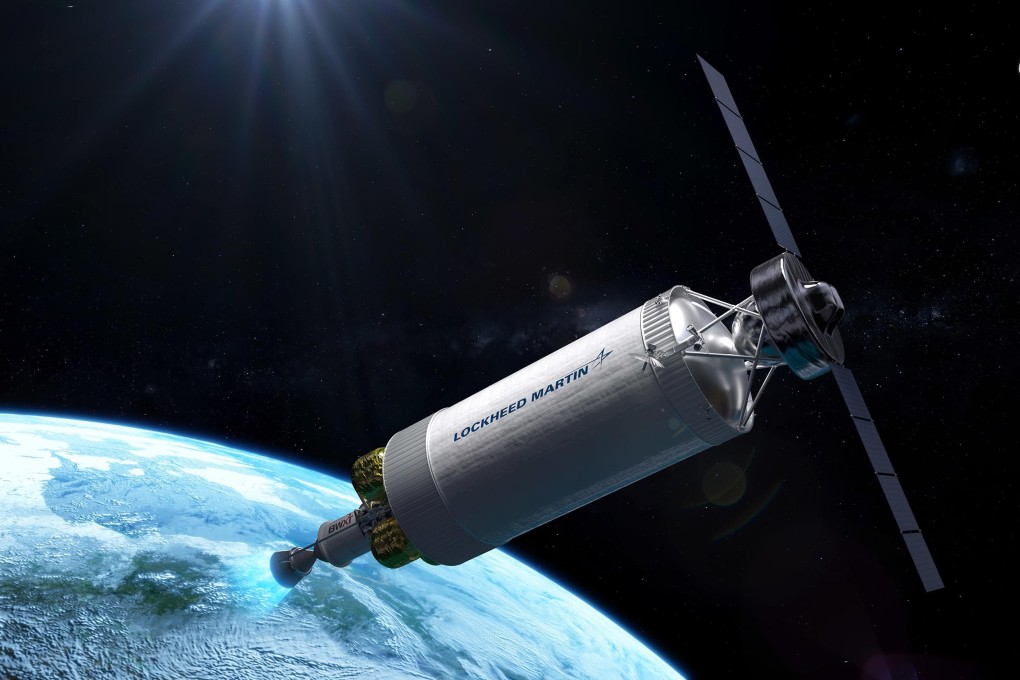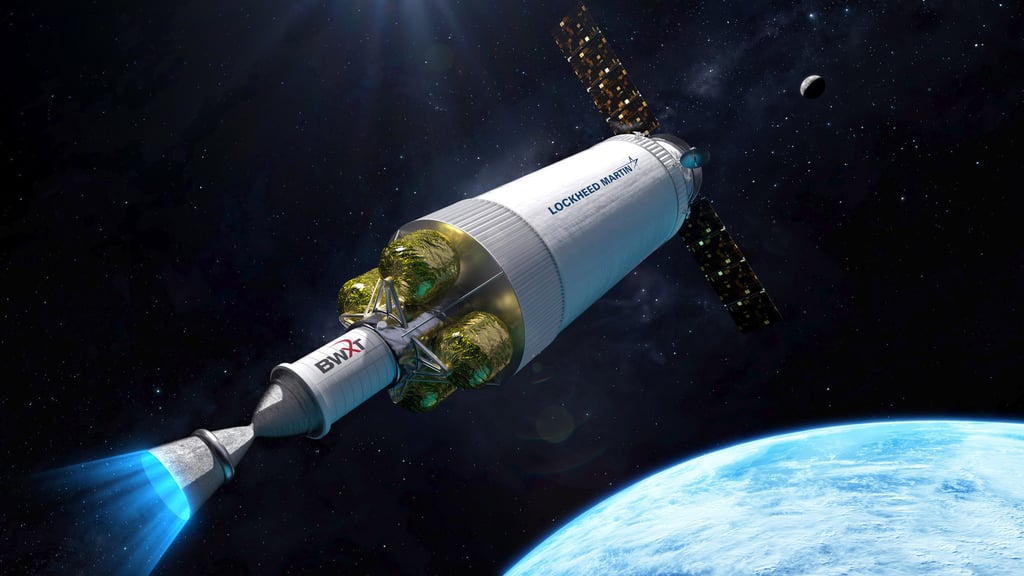Lockheed Martin picked to build US nuclear-powered spacecraft
- US goal will be to launch a spacecraft with a nuclear engine in 2027
- Nuclear spacecraft could make trips to the moon and Mars more efficient

A US Department of Defence agency and Nasa selected Lockheed Martin Corp to design and develop the first nuclear thermal rocket engine to be tested in space, part of a programme called DRACO.
Through a contract announced on Wednesday with the federal research and development organisation known as DARPA, Lockheed Martin will design and build the nuclear-propelled engine along with an experimental spacecraft, called X-NTRV. The goal will be to launch the spacecraft with the nuclear engine in 2027.
The overall value of the contract is roughly US$500 million, with Nasa committing about US$250 million and DARPA contributing the rest.
The space agency is primarily focused on funding the engine development, while DARPA will handle the nuclear regulatory requirements and environmental protocols surrounding the launch. The US Space Force will provide the launch vehicle and pad for the X-NTRV vehicle.

The idea of nuclear thermal propulsion has long been considered as a way to send shortened crewed missions to Mars. Such engines could produce high thrust, but more efficiently and with less complexity than traditional chemically powered rocket engines.
Nuclear-powered rocket engines work by transferring heat from a reactor to hydrogen propellant. As the hydrogen heats up, it expands and is funnelled out of a nozzle, producing thrust.